Ah, Colorado. One day you’re sipping iced mocha latte in shorts, the next, a blizzard has buried your lawn under 10 inches of snow. If you’ve lived here long enough, you know Mother Nature doesn’t give much warning – she just does her thing. So, if you want to keep your landscape looking good through winter and avoid crying over a sad and tired landscape come spring, consider the tips below. Here’s how to prep your outdoors for Colorado’s frosty embrace, with a touch of humor to keep you warm.
1. The Last Cut of the Season – Think Goldilocks
Your last mow of the year should be close to your normal mow height of around 2-3 inches. This length will allow for protection of the turf crown but be short enough to not promote snow mold. If it’s too long, it’ll mat under snow and rot faster than leftover Thanksgiving stuffing. If it’s too short, it’ll freeze and feel like a cactus underfoot. Aim for Goldilocks grass—just right.
2. Frozen Isn’t Just a Movie

Nothing ruins a good spring like discovering your irrigation system is now a sprinkler-shaped icicle. Avoid burst pipes by blowing out the system with compressed air. This is one job you don’t want to skip—unless you love calling plumbers when they’re busiest (and priciest).
Prior to the first freeze of the season, your back flow should be drained to protect it from freeze damage (or temporarily covered and insulated). Before the ground begins to freeze, the system should be blown out. This process involves blowing compressed air through your irrigation pipes and heads to ensure that most of the water is removed, which could cause them to freeze and break if not done.
3. Mulch Like You Mean It
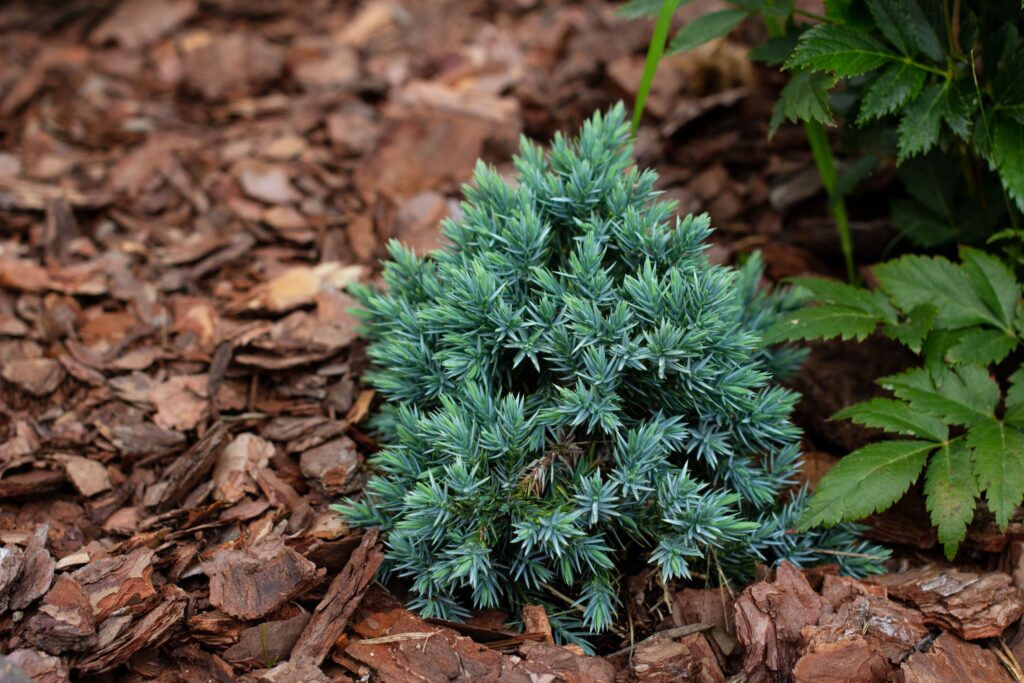
Mulch isn’t just for making your beds look pretty—it’s like a heated blanket for your soil. Pile on a 2-3 inch layer around shrubs, perennials, and trees to help regulate soil temperature, prevent roots from turning into popsicles, and keep weeds from throwing a surprise party. Stick to a 3” maximum depth and avoid piling mulch on the trunk of your tree or directly on the stems of your shrubs as this keeps the plant too wet, and, in turn more susceptible to rotting, insects and diseases. Learn more about the importance of mulch in your landscape.
4. Perennials Like Haircuts Too
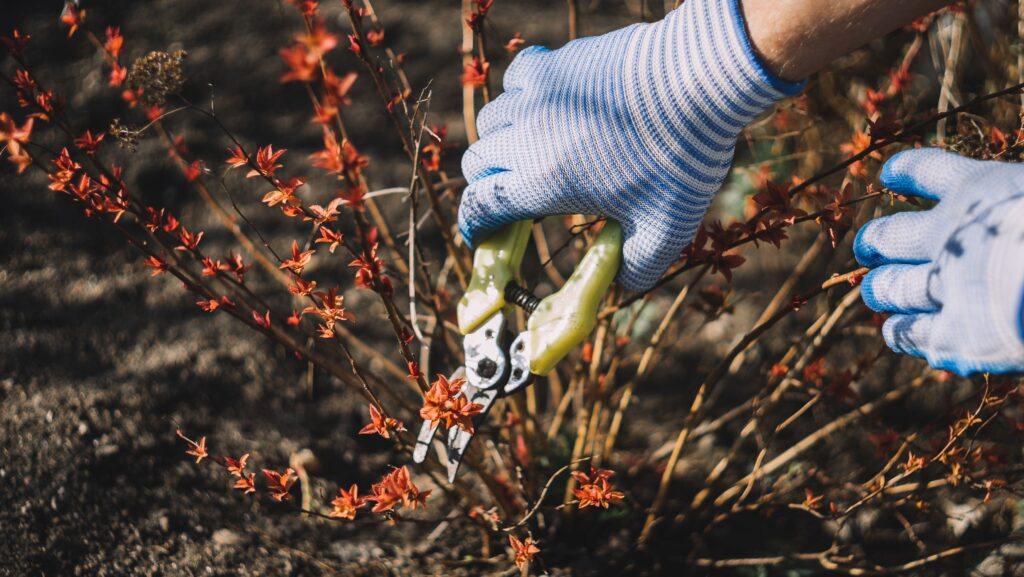
Perennials need a trim to stay healthy, but not every plant appreciates a haircut in fall. Cut back spent perennials to about 2-3 inches. We recommend leaving ornamental grasses and Russian Sage uncut until early spring, as they provide great winter interest and in some cases a winter food source for birds. Be sure to cut them back prior to spring growth resuming.
5. Take Out Your Dead, Bring in Your Pots
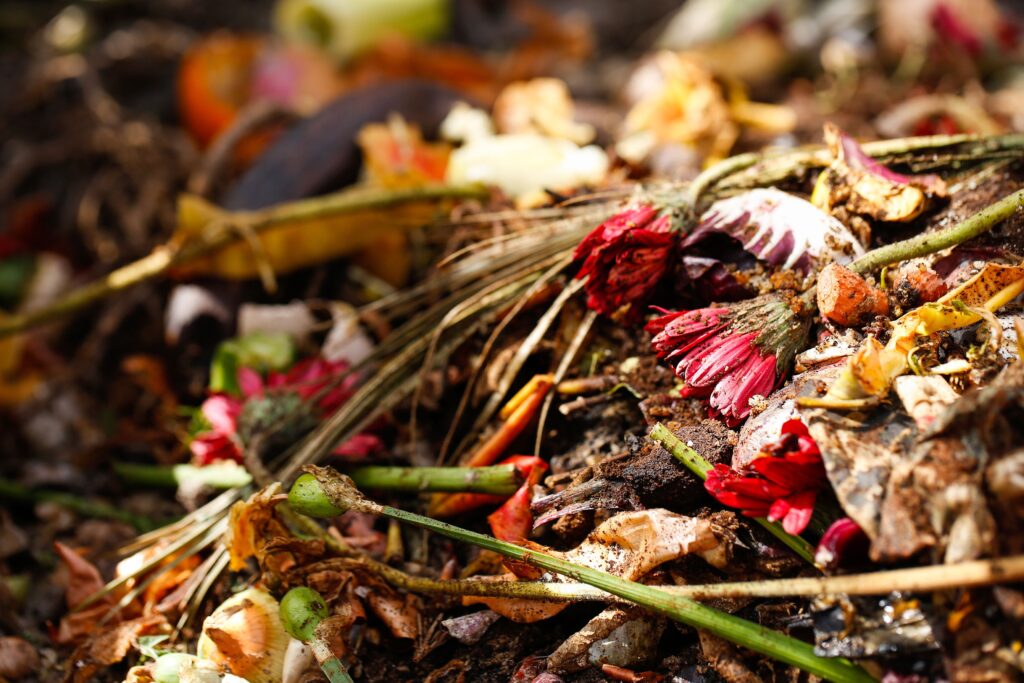
Potted plants are Colorado’s version of snowbirds—get them inside before the frost hits! Those ceramic planters will crack faster than your New Year’s resolutions, so move them to the garage or basement until spring. Some potted plants like succulents may even thank you by maybe staying alive.
Remove spent annual flowers and vegetables from your gardens and posts and add them to your compost bin if you have one. This provides them with plenty of time to break down over winter, providing rich compost for planting in the spring.
6. Hydrate… Yes, Even in Winter
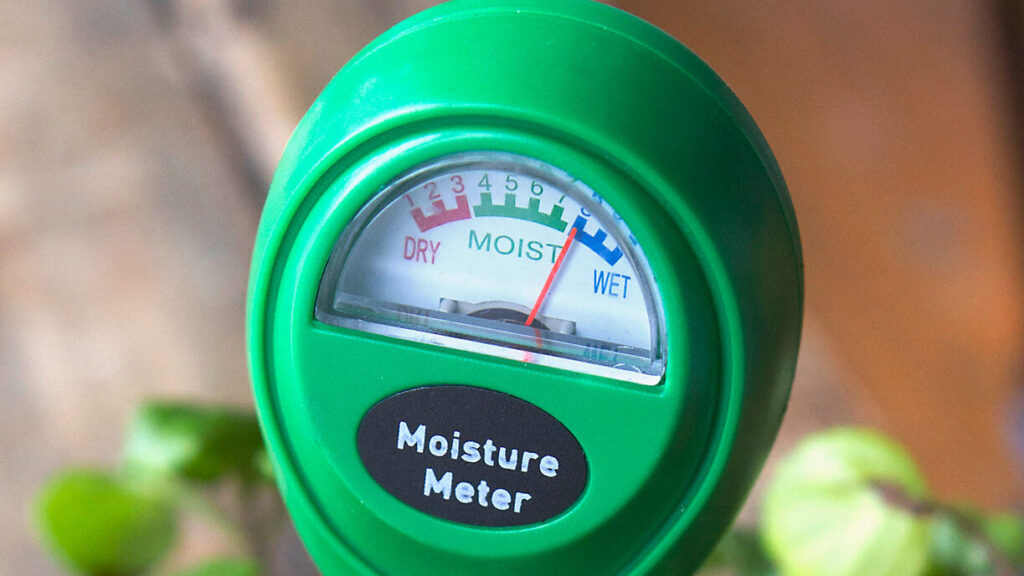
Your neighbors might think you’re nuts, watering your plants in January. However, unless your neighbors are squirrels, don’t worry about what they think. Purchase a moisture meter to check the moisture levels of your plant material over winter months. Water on days over 40°F . If you don’t like dragging hoses around during our colder seasons, consider Native Edge’s winter watering services to help your turf and plants thrive. Learn more about the importance of winter watering and best practices.
7. Don’t Leaf it Alone
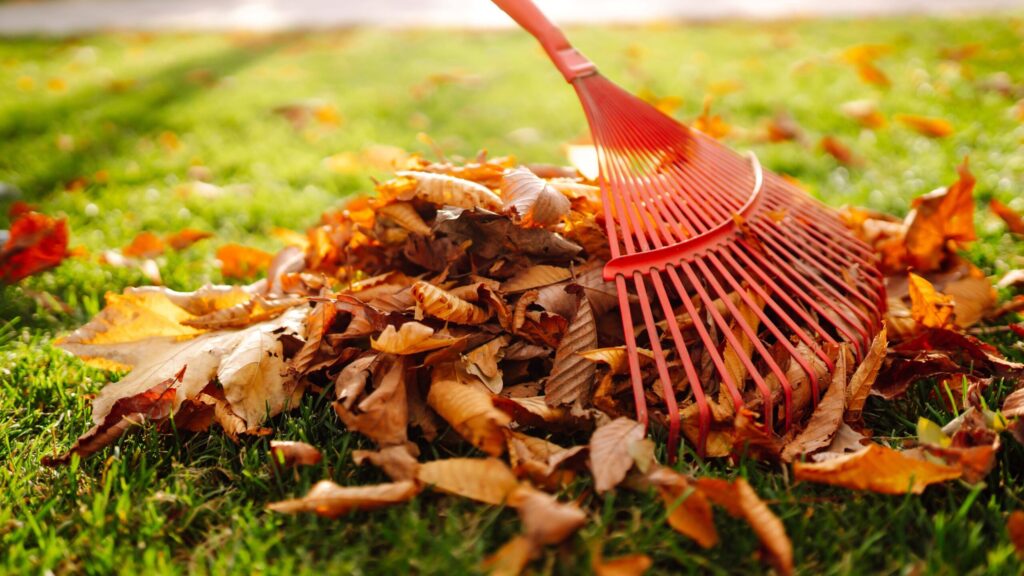
Leaving leaves scattered around your yard might seem tempting, but too many leaves left to decompose on the lawn can smother grass, preventing it from getting sunlight and oxygen. This can lead to root rot and damp areas that attract pests like mice and insects and can end up weakening or damaging the lawn. Periodically rake them up throughout the fall season—your lawn will thank you by not becoming a fungal swamp and your dog won’t track in half the neighborhood’s foliage after zoomies.
Also keep in mind that leaves left to decompose on walkways, patios and decks can result in unwanted stains and discoloration.
8. Unclog Those Gutters!
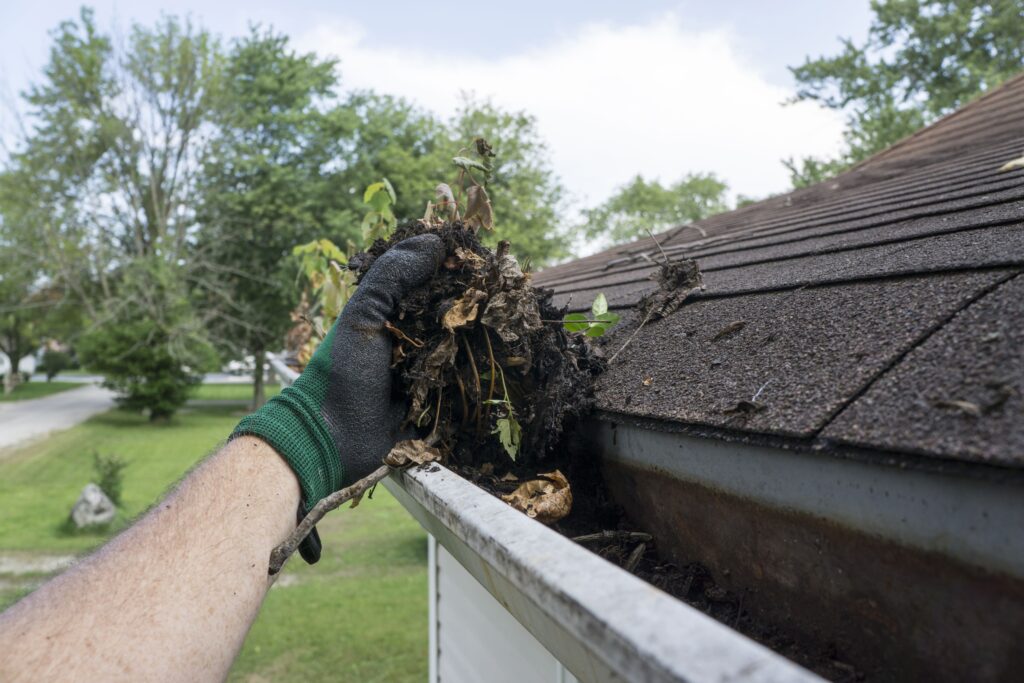
Gutters full of leaves may not seem like a landscaping issue—until winter storms turn them into ice dams, sending water straight into some of very wrong places (like your basement). Gutters should be inspected and cleaned out once per year. If you have a gutter guard the need to clear them will be less frequent, however small organic debris, bugs, and other small matter can still accumulate over time. Early winter after the majority of leaves have fallen is the perfect time to clear you gutters and ensure they will be ready to move water come spring. (If your downspouts are connected to catch basins, be sure to inspect and clear them as well). Grab a ladder, scoop out the gunk, and let those downspouts flow! If heights aren’t your thing, invest in gutter guards or convince a really tall friend to “help” (promise them hot cocoa).
9. Light the Way!
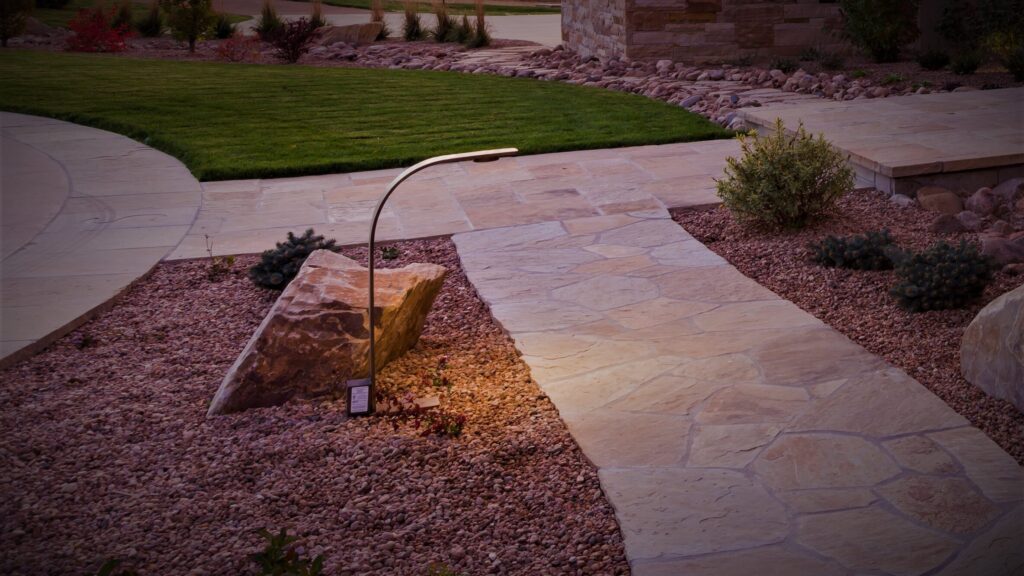
When shorter days and longer evenings are ahead come fall and winter, maintaining and improving your outdoor lighting can make a big difference by helping offset those wintertime blues and creating a safer, more navigable outdoor space for you and your . Check and replace bulbs, check wire connections, clean the fixtures and consider adding and replacing fixtures or new lighting zones. Learn more about low voltage landscape lighting.
10. That’s a Wrap
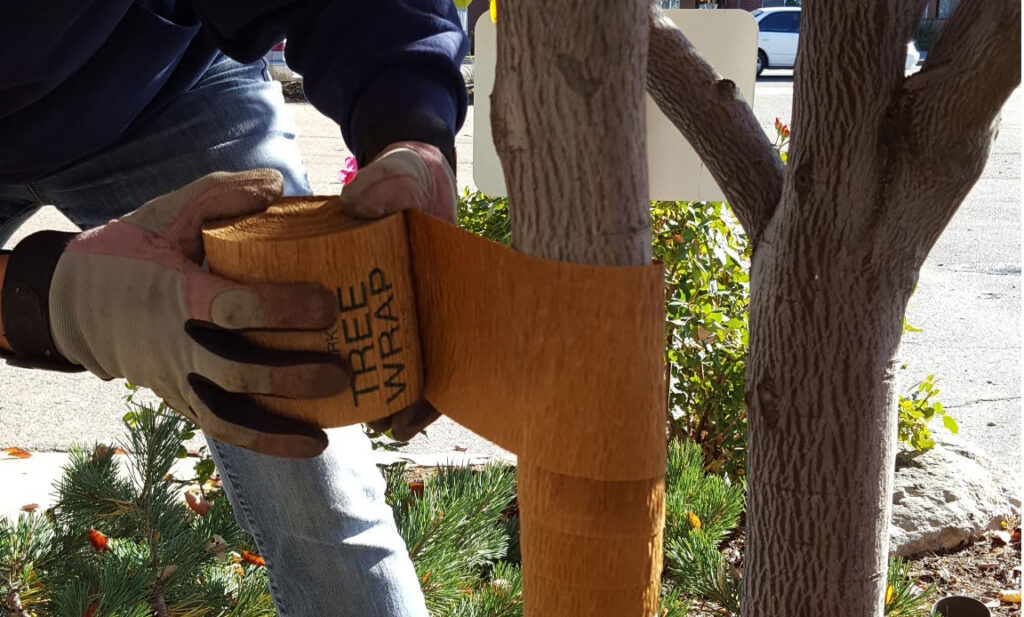
Some trees like linden, maple, ginkgo, crabapple, and redbud need extra pampering, especially when they are young little rascals, to protect them from sunscald and frost cracks. Tree wrap is available at your local hardware or garden center. And as for delicate young evergreen shrubs and trees located in windy areas, consider wrapping them in frost cloth so they don’t get wind-whipped like lips on a February ski day. While you’re at it, wrap yourself too—no one needs frostbite while landscaping.
With a little planning and physical prowess, winterizing your Colorado landscape doesn’t have to be a below zero survival sport. Instead, once that list is checked off you will be ready to sit back with a hot toddy knowing your landscape will be well rested and ready to rock come spring. Just remember: If the lawn looks awful come spring, it’s probably not completely your fault— blame it on the weather.
Stay warm, and may your plants be ever in your favor!
Get In Touch
To schedule a consultation or request a quote for services please call 303-245-9166, send an email to info@nativeedgelandscapes.com or Get In Touch through our website!

